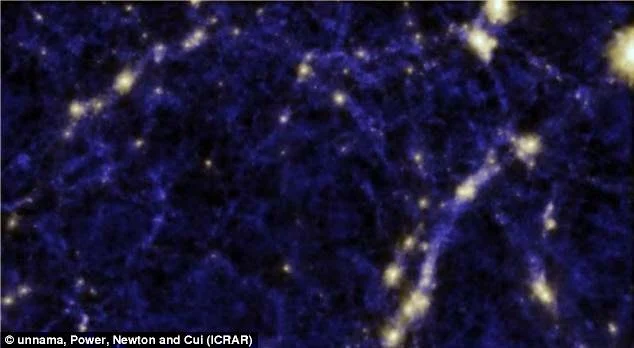Εκπληκτικό
βίντεο μας μετατρέπει σε ταξιδιώτες του Σύμπαντος. Scientists at
Durham University create a mesmerising 3D fly-through of the hundreds of
thousands of known galaxies in space.
Τρεις
επιστήμονες του Ινστιτούτου Υπολογιστικής Κοσμολογίας του Τμήματος Φυσικής του
Πανεπιστημίου Durham στη Βρετανία δημιούργησαν ένα βίντεο, ένα 3D animation για
την ακρίβεια, το οποίο επιτρέπει στον χρήστη να ταξιδέψει στο Σύμπαν. Two scientists and a researcher at the
Institute for Computational Cosmology, part of the University of Durham's
Physics Department, have generated a 3D animation that allows you to see the
universe, as we currently know it.
The simulations are
perhaps the closet you will get to experiencing warp drive on Star Trek's
Starship Enterprise.
Πιο
συγκεκριμένα το animation επιτρέπει στον χρήστη να… πετάξει μέσα στα
εκατομμύρια των γαλαξιών που έχουμε εντοπίσει στον Κόσμο.
A sparkling
arrangement: Here, a simulation of the cosmic web is pictured, showing clusters
of galaxies and a void in the middle of the image, where Dr Alpaslan and team
discovered tendrils of galaxies.
Οι
επιστήμονες χρησιμοποίησαν δεδομένα του προγράμματος GAMA και εικόνες του
προγράμματος SDSS δημιουργώντας ένα πραγματικά εκπληκτικό αποτέλεσμα. The
fly-through was created by Will Parr, Dr Peder Norberg and Dr Mark Swinbank
using catalogues documenting all known galaxies from GAMA (Galaxy
and Mass Assembly), and images of the galaxies
themselves from SDSS (Sloan Digital Sky Survey).
Using the data, the
three were able to create a virtual representation of the known universe. The
fly-through accurately shows the positions of galaxies, to scale, although the
galaxy images have been deliberately enlarged to make them more visible.
Computer
simulations suggest that matter in the universe is distributed in a 'cosmic
web' of filaments, as seen in the image above from a large-scale dark-matter
simulation. The inset is a zoomed-in, high-resolution image of a smaller part
of the cosmic web, 10 million light-years across.
To discover
tendrils, the Gama team created the largest ever galaxy census of the southern
skies using observations from the Anglo-Australian Telescope in New South
Wales, Australia. ‘Our new catalogue has looked deeper into space and mapped
each patch of sky up to ten times to make sure it's as thorough as possible,’
said Dr Aaron Robotham from The University of Western Australia node of ICRAR. ‘We
weren't sure what we'd find when we looked at voids in detail, but it was
amazing to find so many of these tendrils lurking in regions that have
previously been classified as empty,’ said Dr Robotham. The Gama team plan to
catalogue more tendrils for further study as their detailed map of the universe
expands.

.gif)



Δεν υπάρχουν σχόλια:
Δημοσίευση σχολίου